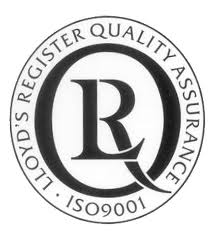
Surface treatment of metal requires a high corrosion protection and quality. Therefore MFI has a production process that meets the highest quality requirements in the industry.
MFI operates a paint shop in which metal parts of colled steel, galvanized steel, cast iron and zinc are coated. High quality demands are set for this surface treatment, corrosion protection and quality.
Pre-treatment
Pickling
These spray booth pickling line is the ultimate solution for the surface pre-treatment of galvanized, zincor steel. Also laser cutted components can be pre-treated by these very strong pickling line.
Spray degreasing
This is an
alkaline degreasing. In this step we will remove the dirt and oil from the
products. This degreasing will take part at a temperature of 55°C. The products will be
sprayed with a pressure of 2 bar.GOAL: Make
sure that the surface is clear so an ideal adhesion can be guaranteed.
Dipping degreasing
This is also an
alkaline degreasing but at 65°C. The aim is to eliminate the remaining oil and fats, which
are still at the product after the spray degreasing. The advantage of this is dipping degreasing is that this degreasing will work in the areas and places that the spray
degreasing can’t reach. By this technique every place will be degreased and guarantees a higher quality.
Rinsing 1
The first rinsing happens by immersion into tap water which is continuously refreshing. This needs
to be done to make sure that the last elements of the degreasing products are well cleared.
Activation
This bath excists out of demineralised water and titanium cristals. Thes titanium cristals will be put on to the metal surface and they will be functioning as germs. Around the whole area of these germs, phosphated cristals will be formed in the phosphating by zinc bath.
Zinc phosphatation
This is a tri-catione zinc phosphate (Zinc, Nickel and Manganese). Around the
Titanium Crystal, of the activation, phosphate crystals will grow. This
process will end when the entire metal surface is covered by a zinc phosphate
film. This phosphate layer provides a very good adhesion of the paint layers which
will be applied afterwards. This process is mainly based on a chemical reaction
and guarantees, after the painting process, a very good corrosion resistance.
Rinsing 2
The rinsing happens by a mix of tap water and demineralized water.
Passivation
This is a
bath with demineralized water and Zinkonium. The intention is that small holes in
the phosphate layer have to be filled up with Zinkonium, so that the phosphate layer
is completed.
Rinsing 3
Rinsing in
demineralized clearly water. This is a wash in clear water. In this section the pre-treatment of the metal parts and components is completed.
Electro coating
Electro coating
E-coat-BATH:
this is a water based bath filled up with paste and pigment with a temperature of 28°c. By putting current and voltage in the bath, paint particles will cover the metal surface. Due to the
flow of the voltage the paint particles will be bonded to the metal surface.
The higher the voltage, the more paint particles will be bonded. And the higher
the thickness of the e-coat paint will be.
Rinsing 4 & 5
First
Ultrafiltrate bath:
This water based bath has almost the same composition as the E-coat bath. The only difference is that this bath contains no paint particles. This is obtained by ultrafiltration of the liquid of the E-coat bath. The purpose is to remove paint particles from the surface. This bath is in cascade with the E-coat bath and the paint particles which have been removed go back to the E-coat bath of the previous step.
Second Ultrafiltrate bath:
This is the same as in the first Ultrafiltrate bath. The intention is to flush off the few loose paint particles, which are carried away from the first Ultrafiltrate bath. This bath is in cascade with the first Ultrafiltrate bath and so the paint particles eventually come back in the E-coat bath.
This water based bath has almost the same composition as the E-coat bath. The only difference is that this bath contains no paint particles. This is obtained by ultrafiltration of the liquid of the E-coat bath. The purpose is to remove paint particles from the surface. This bath is in cascade with the E-coat bath and the paint particles which have been removed go back to the E-coat bath of the previous step.
Second Ultrafiltrate bath:
This is the same as in the first Ultrafiltrate bath. The intention is to flush off the few loose paint particles, which are carried away from the first Ultrafiltrate bath. This bath is in cascade with the first Ultrafiltrate bath and so the paint particles eventually come back in the E-coat bath.
Curing/Baking
Curing of
the paint in the oven: In this
oven the products are brought to a temperature of ± 180 °C. The time the
products spend in the oven, can be set. The paint will, by means of a
polymerization reaction, hardened. This gives the paint its final mechanical
and chemical properties.
Powder coating
Powder coating
Attaching
the powder-paint: After a careful and qualitative pre-treatment, whether or not in combination with e-coat, the
surfaces will be painted in an electrostatic powder spraying booth. The powder
is positive loaded which is opposite to the negative loaded product. As a
result, the powder is attracted to the products and will stick to the surface.
The range of powders that can be offered by MFI, allows you to choose from a
large range of colors, qualities, effects and gloss. Depending on the
application we apply epoxy, polyester, or epoxy-polyester powders.
Curing/baking
In this
oven the products are brought to a temperature of 190 °C. The time the products
remain in the oven, can be set. The powder paint will, by means of a polymerization
reaction, hardened. This gives the paint its final mechanical and chemical
characteristics.